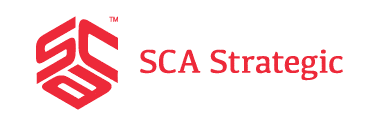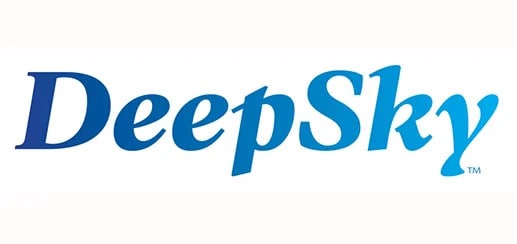Find the best Warehousing & Fulfillment company by filling out the form below, or Click Here to continue reading our page In-House Fulfillment: When it’s Better to Keep Fulfillment In-House and How to Maximize Performance
Many businesses struggle with the idea of outsourcing to a fulfillment center or 3PL warehouse to help save time and money. While many businesses find benefits to this option it is not for everyone. We will outline some reasons why this is not always the best solution, and give you some guidance on how to manage your own fulfillment better. We will also provide a couple of reviews for some products that help businesses perform better on their own.
The first thing that probably comes to mind is cost. When profits are not high yet it might be difficult to start outsourcing fulfillment. When looking to use a fulfillment center there are start-up costs involved, storage costs, charges for movements, charges for employees that they are using to fulfill all of your business needs, etc. When there is not a lot of extra cash flow these costs can be very daunting and to some just not an option at all – especially if you have to rely upon your own time in lieu of paying a fulfillment center. Of course shipping costs can be very high for companies with a smaller order volume which is where a fulfillment center could help you save money, as these companies usually do have a better rate. Look at what costs your company is incurring for all of these services and compare them to the rates of these fulfillment companies and 3PL warehouses and you will find your answer. As a start up, you might have to boot strap it a while until you can afford the cash flow expense of an outsourced solution.
Then there are the businesses that have specific needs that entail too much work to outsource without a large potential for problems. For example, there are many different businesses that rent out clothing on a monthly basis to their customer. When these boxes get returned the clothing needs to be dry-cleaned and inspected thoroughly. Not that this is impossible to outsource, but these unique services will more than likely not be provided by many 3PL warehouses or fulfillment centers. Most outsourced warehouses ship standard goods and anything out of the ordinary could become problematic. Odd sizes and unique requests will add to the cost of outsourcing your business needs. When it comes to these niche companies it will more than likely be better to keep this side of the business under your own control.
Speaking of control, there are also businesses (and their owners) that need a little more control over their process. Outsourcing to a 3PL warehouse or fulfillment center means letting go of part of your own business. If you’ve been handling your own fulfillment and have created a working procedure for yourself, it could be difficult to let go and hand this over to another company. Most fulfillment centers have a streamlined process in order for them to best handle fulfillment for many different companies using their services. It is very important for a business owner to find a company that meets their needs as well as a good partner to work with. This may be hard to find for certain companies so maybe the own fulfillment process could be streamlined better instead of looking for it elsewhere.
If outsourced fulfillment isn’t in the cards, then you need to make sure you are armed with the right processes and systems to do it effectively. Anything can be managed on a very small scale, but as you grow, additional sales will expose any problems in the fulfillment process and will result in potentially catastrophic errors.
So what are the most important things to help your business? In order to be successful with in-house fulfillment you will need well-trained people and the right technology and software. It’s what all of the professional 3PLs and larger companies use to ensure success. While you may not be able to purchase robots to pick orders, certainly bar code scanning and inventory software are affordable options to significantly reduce errors.
When you look around you will find quite a few fulfillment software platforms to help you manage your business better. These software platform companies know that not every business is going to fall in line with outsourcing to a fulfillment facility. As such it can be overwhelming for you to try to find something that works right for your business. One of our recommendations would be to seriously consider other alternatives before using any shopping cart plug-ins. While these do have their pros and cons, you may run into trouble with these in the long run. The positive aspects are reasonable prices, free trial periods, no selling limits and unlimited storage. On the negative side, they may lock you into inflexible work flow processes that either set your company up for errors to take more time to process, and the customer service is sometimes erratic. They also frequently charge you with transaction fees, something you’ll see add up dramatically as your order volume rises. In addition, many of these services don’t offer refunds, bringing nothing but a money-losing risk when you need to gain the most profit. You need to find something with dependability and experience, as well as scalability. Lastly, it’s smart to avoid any service locking you into a contract, despite seeming impossible to find.
Self-fulfillment is when an eCommerce company maintains its own inventory, packs, and ships products to the customers themselves. Self-fulfillment is oftentimes used by companies at the extremes of the growth cycle. If a company is just starting out, then it may not have the resources to invest in third-party fulfillment services. Once a company has grown large enough, it will be able to open and manage its own warehouses and save on the overhead of contracting out to a middle man or offer more customized solutions to its customers. Especially large companies, like Amazon, may even use their warehouses to offer fulfillment services to smaller companies.
Some of the common reasons businesses decide to self-fulfill rather than use an outsourced fulfillment solution are as follows:
In this post, we will assume that you are in the first phase. You are likely just getting your feet wet with eCommerce and need to start at the beginning. We’ll teach you what you need to know about maintaining inventory and dealing with the different aspects of shipping products to customers. Thankfully, there are a lot of tools available to make this process easier that work just as well for small businesses as they do for larger ones. Let’s get started with a brief overview of the process before taking a deeper look at how it all comes together.
When you opt for self-fulfillment, you become your entire shipping department. There are a lot of responsibilities that come with this, but when you are just starting out and your order counts are low, it isn’t hard to keep up with, as long as you know what you are doing. The basic steps that you need to take are listed below. In the sections that follow, we’ll take a closer look at each.
In the very early stages of your operation, your warehouse may simply be a spare bedroom or your garage. Depending on the size of the items you will be selling, this option may last you for quite a while. As your business grows, you may find that you need to expand. An obvious first choice for expansion is to rent a public storage facility or small warehouse space, or even to jointly use a space with another business. If your shipments will be coming on pallets, make sure the facility has a loading dock if needed. In some cases for the smallest of home-based businesses, it may be best to use the storage facility as a backup and still keep some stock at home. That way, you will have easy access to the stock when orders come in.
If your business gets even larger, you may have to look into leasing actual warehouse space. In some markets, there is a shared warehouse space available that might make this option more affordable. Alternatively, you may be able to partner with a business that has warehouse space already. Below is a more detailed explanation of all of the options for in-house storage and inventory management.
When managing your in-house fulfillment operations, finding a suitable warehouse space is crucial for storing your goods and materials. Selecting the appropriate option can significantly impact the efficiency and scalability of your business.
This section will explore different warehousing options to help you decide based on your business size, inventory volume, and growth projections.
If you’re a startup with small products and limited inventory, utilizing your personal space as a warehousing solution can be a practical choice. It offers benefits such as cost-effectiveness, convenience, and flexibility during the initial stages of your business.
You can save on renting external warehouse space and easily access your inventory. However, as your business grows, it’s crucial to assess the scalability of using personal space for warehousing.
Consider alternative options to accommodate increased inventory and optimize your fulfillment processes. Remember that specialized storage requirements or strict compliance regulations may make using personal space unsustainable in the long run.
Each business is unique, so evaluate your needs, inventory volume, and growth projections to determine the most suitable warehousing solution for your in-house fulfillment operations.
When your business expands, and you need additional storage space, subleasing or leasing a dedicated warehouse is a viable option. This choice allows you to scale up your operations while retaining complete control over your fulfillment process.
By securing your warehouse space, you can customize it according to your specific requirements, creating an optimized environment for efficient inventory management and streamlined order fulfillment.
In addition, subleasing or leasing a warehouse space offers several advantages, including the following:
Consider the options mentioned earlier based on your business size, inventory volume, and growth projections. Then, assess your current and future warehousing needs to determine the best solution for your in-house fulfillment operations.
You will need to make sure that you are constantly stocked with the supplies that you need to package and ship products to customers. There are three main categories of supplies that you will need:
You can find much more information about how to effectively package products for your eCommerce business in this previous blog post of ours. To see a wide variety of carton, packing materials, and embellishments available, you can check out popular websites such as Uline.
Before you can ship anything to customers, you need to decide where you will sell to them from. We’ll include some common platforms for web sales below but strongly encourage you to also have your own website. By selling directly from your own website, you’ll be able to build your own customer base and gather data that can be used to improve your marketing efforts and conversion rates.
If you have decided to take our advice and operate a website of your own to sell your products from, then you will need to decide on which shopping cart software to use. There are enough options that discussing them is a whole blog post in itself. You can read about the different options in this previous post. Needless to say, choosing the best Web store for your business should be considered very carefully, as it’s important to integrate with other systems that your business might use, such as :

At the very least, your web store application should have shipping software or in the very least allow you to integrate with shipping software. Services such as Endicia, Stamps.com, Shippo, and others are available depending on your choice of carrier. These services will make it easy to print labels and get the shipment into the carrier’s systems.
It’s important to point out that if you only use shipping software, it’s highly likely that you’ll be managing many functions manually. For just starting out and with an extremely tight budget, this may be necessary to get your business off the ground.
Some Web store solutions offer a wide range of integrations that will help cover every area of your business. To give you a few options as examples, we’ve listed some of the more popular Web stores and the supporting plugins that they offer. If you are using a service such as those listed below, you will be able to find a number of software add-ons that will aid you with shipping, inventory, and fulfillment.
It’s important to note that even though most popular shopping carts offer every solution you need to run fulfillment and shipping in-house, there still might be some manual operations or additional customizations needed to tailor to your specific needs. Mapping out your needs and thoroughly researching all options in imperative. The last thing you want to do is switch platforms midstream, as it will increase your costs and waste valuable time that could be spent growing your company.
Alternatively, there are software options that are independent of any platform but rather integrate with most of the popular options. These include products like ShippingEasy, Shipstation, Ordboro, Sellbrite, Shipworks, and SkuVault.
These software products go far beyond what mere label printing and shipping software can do. They will help you to manage your inventory so that you always have the appropriate amount of stock on hand and sync that inventory to your Web store so your customers know what is and isn’t in stock as well. They can integrate all of your sales channels so you have a unified platform from which to pull your sales data. They can even make handling returns easier, and can sync valuable information with financial and accounting systems such as Quickbooks using plugins such as Webgility and Connex.
If you use these systems, they will be used in addition to your Web store. Many will perform most of the following functions (Be sure to look into each option to see a full feature set. As an example Shipworks provides advanced order management, automation rules and shipping label creation, but it does not sync inventory between channels or manage inventory.):
Most businesses use accounting software, such as QuickBooks. This means that they need to get the sales data into the accounting software. Thankfully, many large platforms have the ability to integrate with QuickBooks as a core feature. If the platform that you are using does not, then you may still be able to make the integration. Intuit maintains a list of integrations that can be made with the QuickBooks software. Some of these are intermediary solutions that will connect QuickBooks with software that does not have its own integration. Integrating your sales into QuickBooks will reduce the amount of manual entry that you must do and eliminate human error from the equation.
QuickBooks also has built-in inventory functionality for those that choose not to utilize a Web store-based inventory plugin or a full-blown fulfillment, shipping and inventory management solution. It is not the most advanced inventory system available, but many businesses find that it suits their needs well. If it does not, and you do not want to use an entirely separate program for your inventory, then you can look at this QuickBooks standalone app: SOS Inventory.
The entire fulfillment process (receiving, inventory management, fulfillment, shipping and returns) can completely fall apart if all of these processes and procedures rely upon humans alone. In order to minimize errors to an acceptable level, barcode scanning technologies must be implemented. Barcode technology is vital because it allows you to automatically receive inventory, manage inventory, and pick and ship products with computer scanning rather than a set of eyeballs from a human (which are very prone to error!).
Barcode scanning technologies automate the following processes:
There are three main barcode software options to choose from:
As with choosing your Web store, and inventory management and fulfillment/shipping software, it’s important to take a look at your overall needs to determine which barcode scanning software solution is the best for your business. On the one hand, using an all-inclusive inventory management application may provide a single solution, it may come at the expense of flexibility and ease of modifying processes to meet your specific process and procedures within your warehouse. At the other end of the spectrum, using a single app specifically geared towards each need of your business provides great flexibility, but does require you to manage and maintain multiple apps.
If not outsourcing is the right choice, you need to look beyond and see what tools you can use to make fulfillment work better in-house. You’ll need something that will fully integrate with your existing systems to avoid transition problems. In our quest to help businesses find what is the right fit for them we’ve started reviewing some of these Software platforms.
Managing your in-house fulfillment operations effectively requires the right software solution. In this section, we’ll introduce you to some popular options that can optimize your processes and support the growth of your small business.
Consider the following software solutions based on your specific requirements, budget, and integration needs. Each solution offers unique features and benefits to streamline your order processing and improve inventory management:
If you’d like more information on becoming your own fulfillment company or finding a company to handle fulfillment for your growing business, reach out to us today.
We Care About Your Privacy. Your information is shared with only pre-screened providers. You may opt out of communication at any time. View our Privacy Policy.

I want to say thank you for your help in finding a warehouse so quickly. Your service was amazing. I received replies the same day and have selected a company that will work well for us. I definitely recommend your services.

I wanted to express my gratitude for your services and let you know that it was a very enjoyable experience! We have selected one of the companies and they are awesome!

You are doing such a great job and this service that you provide is a life saver for people especially startups like me....We cannot spend budgets on researching as much as the big firms can...and you provide us one stop solution which will answer all our questions.

I just wanted to let you know that I selected one of your vendors as our fulfillment house. They can do what we need and we’re looking forward to working with them. They can handle our “special projects” fulfillment, which was key to our decision in bringing them onboard. I appreciate this service. It was great for our company.

I didn’t know there was so much difference in fulfillment companies — this was my first time in need of this sort of service. After a Google search I luckily stumbled upon WarehousingAndFulfillment.com. They saved me an incredible amount of time and money. Within minutes I had a couple of emails from good companies that fit my situation. I am very appreciative of their help.

Warehousing and Fulfillment was the perfect matchmaker in finding us a fulfillment partner. They provided several great options, all of whom were very responsive and willing to take the time to talk through our needs. We ended up going with W&F’s top match and we couldn’t be happier. I highly recommend W&F, particularly to anyone whose business relies on a strong fulfillment partner.

We were having multiple issues with our 3PL fulfilling warranty replacement parts. Our company needed to make a change and make one fast. I reached out to WarehousingAndFulfillment.com to facilitate my search for a reputable, service oriented 3PL that can handle the demands of a highly seasonal business to pick, pack and ship parts quickly. I received several qualified 3PL leads that matched what we were looking for. After reviewing and speaking with many one stood out from the rest, and we found a great partner. We could not recommend WarehousingAndFulfillment.com enough.

We found the perfect third-party fulfillment vendor through insightQuote. We never would have found them on our own. We can’t thank you enough and our customers thank you too.

Thanks for all of your help. This was a huge undertaking for us and your guidance was extremely helpful!

Thank you so much for your excellent service. We have chosen one to go forward with. This has saved us a great deal of time.

They really listened to our requirements and then matched us with great vendors that could meet our specific challenges.

I just wanted to say thank you so much for setting me up with these vendors. I have found pricing better than I ever expected to find.

Legit, this was such a good experience ... I was shocked how fast the vendors contacted me and got the ball rolling. This was such a pleasant experience

What an awesome service. A problem I fought with daily for over 3 weeks, solved in less than 24 hours.

 View More
View More
Get fulfillment tips delivered to your inbox!